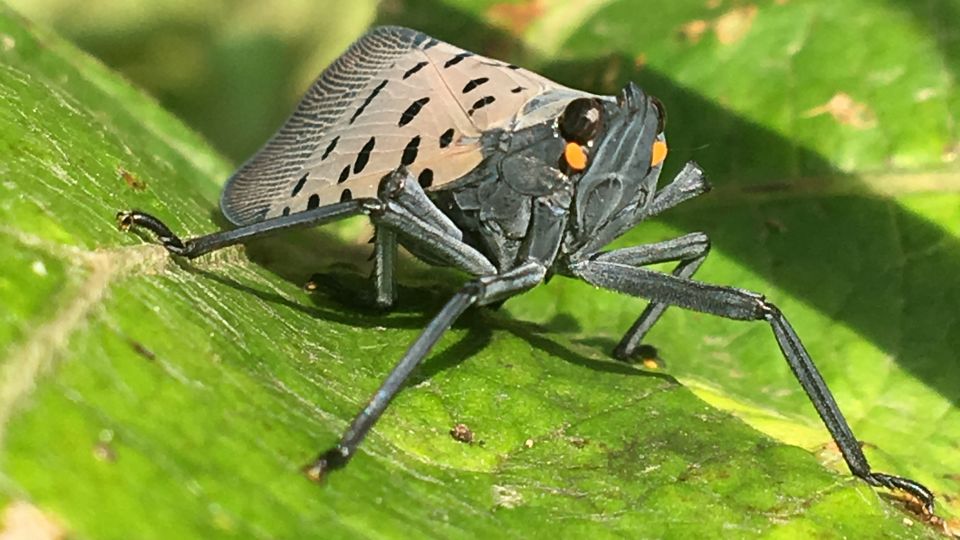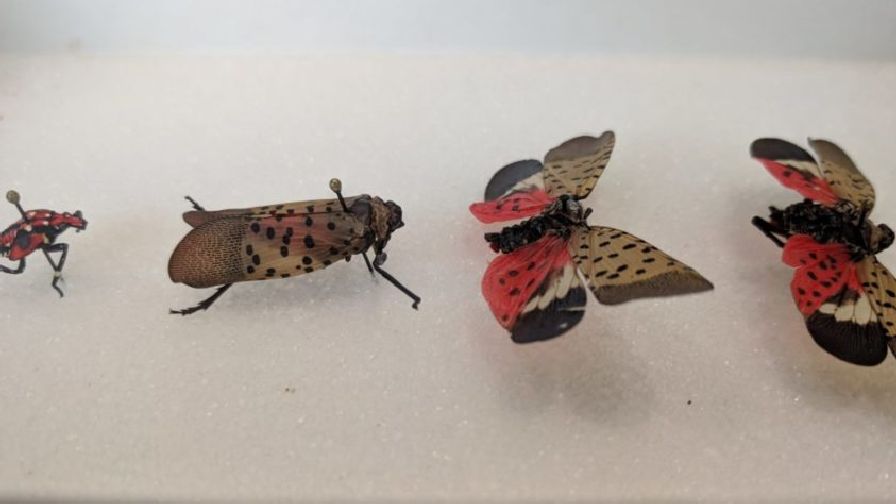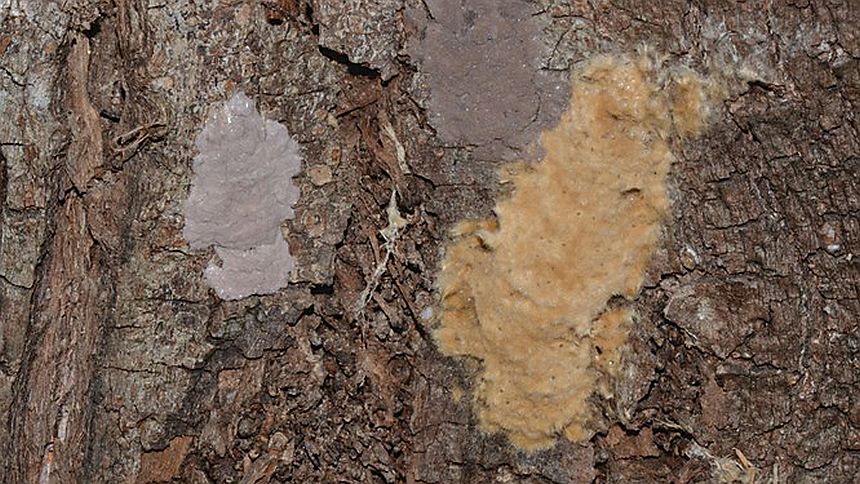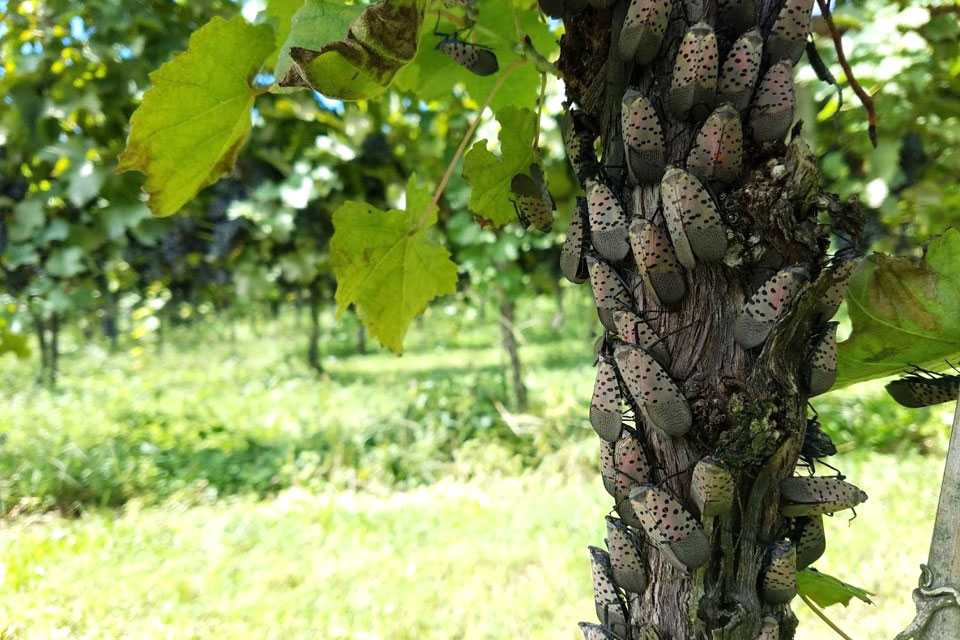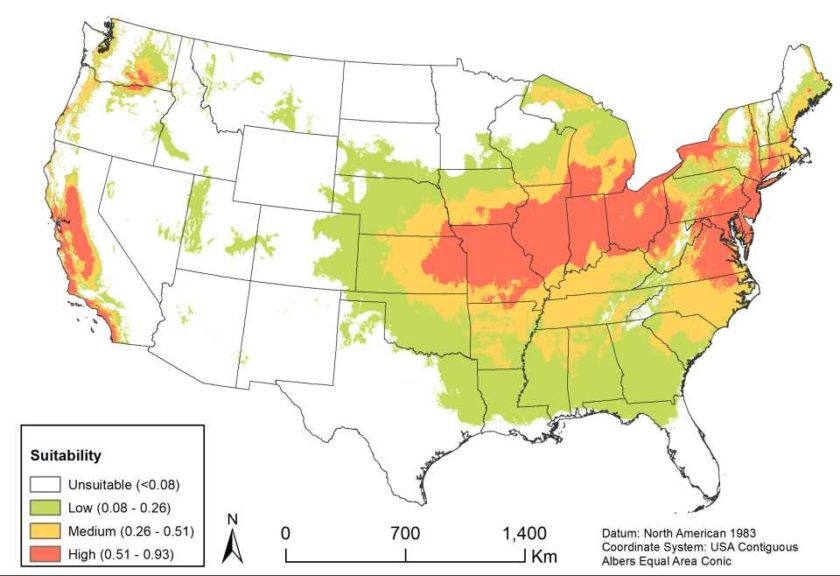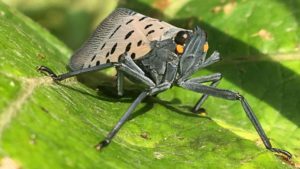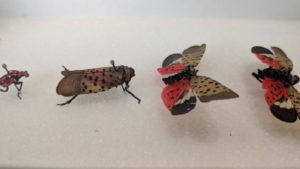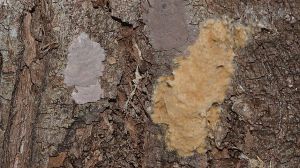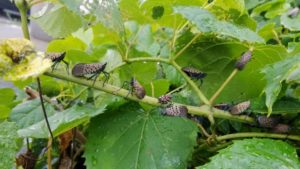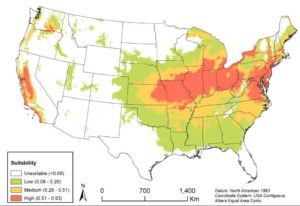Florida Growers On Alert for Spotted Lanternfly
The spotted lanternfly, Lycorma delicatula, was first reported in the U.S. six years ago when found in eastern Pennsylvania. The predator of fruit crops and other plants has since spread to parts of at least seven other states. Is Florida on the itinerary for this invader? The state’s Department of Plant Industry has issued a Pest Alert for it. Here’s why.
The Sunshine State has the spotted lanternfly’s preferred plant host — the tree of heaven (Ailanthus altissima). Tree of heaven has been documented in Florida as far south as Hillsborough County; however, the invasive tree is relatively scarce compared with northern states.
Spotted lanternfly can complete development without tree of heaven, according to researchers, but development is slower. The presence of other potential host plants, such as chinaberry and Virginia creeper, puts Florida at some risk for establishment of this pest.
In the Pest Alert, DPI provided the following specs on spotted lanternfly:
Native to China, spotted lanternfly has become a significant agricultural and ornamental pest in South Korea and Japan. The spotted lanternfly has a broad host range. It is particularly attracted to apple, birch, black walnut, grapes, maple, poplar, stone fruits and especially, tree of heaven.
Its broad host range makes this pest a significant threat to agricultural and ornamental plants.
IDENTIFICATION
Adults are large, about one- inch long and a half-inch wide. Adult forewings are tan-grey with large black spots, and the tips have a fine, interlaced black pattern. Adult hindwings are red with black spots at the base and a white band across the middle and black tips. The hind wings are colorful and distinctive but concealed at rest. Younger nymphs are black with white spots, and older nymphs are black and red with white spots.
The egg masses are distinctive. Thirty to 50 eggs are encased in material that dries to the consistency of dried mud. Egg masses can be attached to any surface. The completed egg mass is typically grey and can be one to two inches long. There are no Florida insects that resemble this species in size and color pattern.
SURVIVAL AND SPREAD
Egg masses can be laid on objects other than plant material, such as lawn furniture, homes, and vehicles. Thus, this pest can travel to Florida as a hitchhiker using pathways similar to those seen for the brown marmorated stink bug, such as RVs or moving/storage containers. Inspection is important to keep this pest from spreading into Florida.
Growers are encouraged to be vigilant and collect samples they suspect as spotted lanternfly. For more information on how to report and submit samples for any plant pest, visit FDACS.gov.




